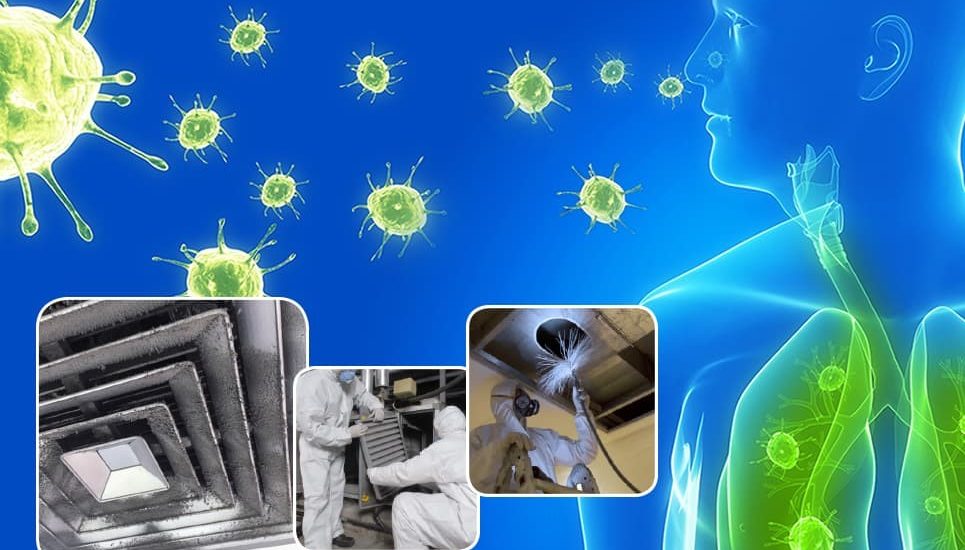Safety in the inspection and remediation of air conditioning systems
- August 27, 2019
- Posted by: sagest
- Category: Senza categoria

Aeraulic systems, air handling systems, are often used in working environments not only to control thermo-hygrometric conditions and to ensure adequate air exchange, but also to abate concentrations of dust and other airborne particles.
However, these facilities “if not properly managed, can spread pollutants of various kinds into the ‘environment: pathogenic microorganisms, allergens, dust, fibers and chemicals. Therefore, the facility can become a source of risk to occupants and technicians engaged in any maintenance and cleaning operations.” Maintenance and cleaning operations that are very important: “In order to keep facilities in good condition and clean, it is necessary to check them regularly to ascertain their hygienic condition, maintain them and sanitize them if necessary.” And during any type of intervention, in view of any specific risks, “it is necessary to take all useful preventive and protective measures to ensure the health and safety of the operators.”
In “Air-conditioning systems: health and safety in inspection and remediation activities“-a publication produced by Contarp, the Technical Consultancy for Construction and the Department of Medicine, Epidemiology, Occupational and Environmental Hygiene of Inail together with the Italian Association of Aeraulic Systems Hygienists (AIISA)-all the risks associated with the individual work phases carried out during:
–visual inspection;
– Thetechnical inspection;
– reclamation.”
For each risk associated with the three different phases are then provided:
– “guidance about the behaviors, equipment and protective devices to be adopted.”
– “summary sheets regarding the PPE to be used for each of the work phases and an emergency sheet on which to note names and useful numbers to contact in case of emergency.”
The paper stresses theimportance of air-conditioning systems, reminding that humans are naturally “exposed to many different chemical and biological agents through inhaled air, contact with contaminated surfaces and ingestion of food and drink; they themselves are sources of microbiological contamination through biological fluids, mucous membranes and epidermis.” And while “most of the substances and microorganisms with which we come in contact are harmless to health,” microorganisms naturally present in ‘air and water, “can take advantage of favorable microclimatic conditions (high humidity and temperature) and possible sources of nourishment (deposits of organic and inorganic residues) within the air conditioning system to multiply and spread in the form of aerosols during normal operation of the system.”
In particular, it is possible for dust, fibers, and organic residues that “exceed the filter media of theAir Handling Unit (AHU) or are generated within the buildings or the system itself (e.g., due to wear and tear of internal duct insulation),” to be deposited on AHU components and in ductwork, or to be transported within the ‘air-conditioned rooms. And, as indicated earlier, precisely the proper management of the plant and routine and extraordinary maintenance work “are the means by which to ensure the good quality of air supplied to the environments served.”
